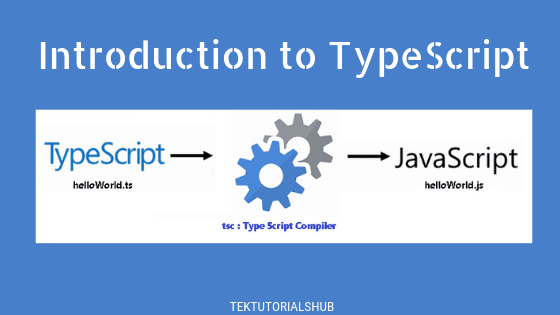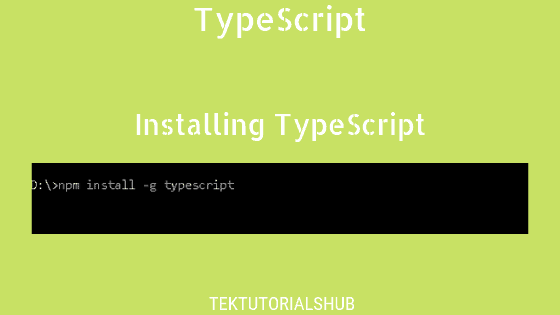In the last tutorial, we learned how to create a simple Hello World example using TypeScript. Before going further, we need to learn the Typescript Syntax and basic rules that need to be followed while writing code in TypeScript.
Table of Contents
TypeScript is Case-sensitive
TypeScript is case sensitive. This means that foo is not the same as Foo.
Typescript Statements
A Typescript statement is an instruction to perform a specific action. A Typical Typescript program consists of several such sequences of statements and they control the flow of the program.
Here is an example of three statements
1 2 3 4 5 6 7 8 9 10 | //statement 1 create a variable var message; //statement 2 assigns “Hello World” to message variable message=”hello world”; //statmenent 3 print out console log console.log(message); |
A single statement may span multiple lines.
Or you can write multiple statements in a single line, provided you separate each statement by a semicolon.
Semi-Colon
; the semicolon is used to indicate the end of a statement.
For Example
1 2 3 4 5 | var message; message=”hello world”; console.log(message); |
But, they are optional if you use a single line for each statement
For Example, this is also valid
1 2 3 4 5 | var message message=”hello world” console.log(message) |
But, they are required if you have multiple statements in a line
For Example
1 2 3 | var message ; message=”hello world” ; console.log(message) ; |
TypeScript Expressions
Expressions are units of code that produces value. They can appear anywhere in the code. They can be part of the function arguments or right side of an assignment, etc
Example of Expressions
1 2 3 4 5 6 | 5+7 //This is an arithmetic expression that evaluates to 12 I++ //Arithmetic expression 'Something' //Primary Expressions a && b // Logical Expressions |
The expressions can be of various types Arithmetic, String, Primary, Array & object Initialisation, Logical, Left-Hand side. Property access, object Creation, Function definition, invocation, etc.
Whitespace and Line Breaks
You can add spaces, tabs, and newline characters anywhere in the Typescript Program. The Compiler will ignore them. You can use them to indent your code so that it very easily readable.
Comments in TypeScript
The Comments can be applied to the line of code or to a block of code
Single-line comments ( // ) − Any text between a // and the end of a line is treated as a comment.
Example
1 2 3 | //this is a single-line comment |
Multi-line comments (/* */) − These comments may span multiple lines.
Example
1 2 3 4 5 | /* This is a Multi-line comment */ |
Summary
In this tutorial, we learned a few of the basic Typescript syntax rules that need to be followed.


